#lycalopex fulvipes
Explore tagged Tumblr posts
Text
He was so intently absorbed in watching the work of the officers, that I was able, by quietly walking up behind, to knock him on the head with my geological hammer.
"Journal of Researches into the Natural History and Geology of the Countries Visited During the Voyage of H.M.S. Beagle Round the World, 1832-36" - Charles Darwin
#book quote#the voyage of the beagle#charles darwin#nonfiction#canis fulvipes#lycalopex fulvipes#fox#animal death#geological hammer
1 note
·
View note
Text
The Lycalopex genus has 6 extant (living) foxes.
The Darwin's fox was discovered by Charles Darwin, hence the name!!
- Lycalopex genus | South American foxes | more closely related to wolves and jackals
- Lycalopex culpaeus | Culpeo
- Lycalopex fulvipes | Darwin's Fox
- Lycalopex griseus | South American Gray Fox
- Lycalopex gymnocercus | Pampas Fox
- Lycalopex sechurae | Sechuran Fox
- Lycalopex vetulus | Horay Fox

ID: a redish grey brown fox called the Darwins fox looking at the camera with a blurry grass background
#fox facts#foxes#fox#fox information#my post#animal facts#lycalopex#south american foxes#charles darwin#fun facts#fact of the week
18 notes
·
View notes
Text

Darwin's Fox (Lycalopex fulvipes)
Chile
Status: Endangered
Threats: limited range
#i just wanted to draw a fox that's all#foxes#fox art#artists on tumblr#animal art#south america#fox#mammal#canine#chile
4 notes
·
View notes
Text

Darwin's fox is my favorite! Besides, it's a Chilean species, tho I've never seen one, I also like gray foxes..
Darwin's fox it's on danger of extinction :c
It's scientific name is Lycalopex fulvipes :33
Okie chat, y'all's turn
Not gonna lie link!!! (Remember they're anons all lmao)
Idk, drop questions, insults, whatevur
11 notes
·
View notes
Photo


Darwin’s Fox Lycalopex fulvipes
#lycalopex fulvipes#lycalopex#darwin's fox#fox#canid#canine#mammal#mammalia#mammology#animal#animalia#zoology#wildlife#nature#canidae#carnivore#carnivora#cute#aww#furry#endangered#endangered species#endangered wildlife#darwin's zorro
278 notes
·
View notes
Photo

Arche 1633 — Renard de Darwin (Lycalopex fulvipes).
Lundi 9 septembre 2019, Raphaël Zacharie de Izarra. _________________________________________ Né le 6 décembre 1965 au Mans, Raphaël Zacharie de Izarra est un écrivain et un vidéaste (bien qu'il n'accepte pas d'être défini en ces termes, « trop forts pour qualifier [ses] petits amusements artistiques »). Depuis 2007, il se met en scène dans plusieurs centaines (milliers ?) de vidéos publiées sur Youtube et Dailymotion. Poète oisif hors du monde et du temps, tout l'inspire et devient prétexte à s'enregistrer (il peut sortir jusqu'à trois vidéos par jour). Obsessionnel, il est l'auteur de très nombreuses chroniques (lectures de ses propres textes, purement littéraires ou politiques), mais aussi d'instants de vie capturés sur le vif (des promenades à vélo, des dégustations de bière, des conversations…), ou d'exercices de style (des montages sur de la musique, plus ou moins étranges…).
Reconnu « adulte handicapé », il dédie chaque seconde de son temps à sa production, et il n'est pas rare de croiser ce personnage lunaire dans les rues du Mans, toujours équipé de son caméscope. En 2014, des associations portent plainte contre lui. Il se retrouve ainsi, par deux fois, devant les juges à devoir s'expliquer sur ses textes polémiques (soumis à passer un examen psychiatrique, on le déclare finalement « pénalement irresponsable »).
Sa chaîne Youtube : https://www.youtube.com/channel/UC4ApXwjJfcTKA3jRWMqgL0A Une tentative de centraliser son œuvre : http://izarralune.blogspot.fr/ _________________________________________ « Projet Arche » : un animal dessiné en quelques minutes chaque jour pendant dix ans. http://projetarche.blogspot.fr
1 note
·
View note
Photo



Darwin’s Fox (Lycalopex fulvipes) as czuciki/Totem. // Etsy
*
'How I love open spaces to roam in, to find all I need to survive. I like a direct line to the skies, to wander broadly and not be limited to forest paths. As for me, well I can find nourishment just about anywhere, in anything. If you have need of me, you may find that you also have a knack of finding nourishment in many things. We are survivors, you and I, and we have a great capacity to see beauty on a grand scale, in so many facets that others may wonder how we can find so much, so beautiful. Sometimes people may not notice you, or pass you over, but do not worry. There are those who see you for who you really are, one more manifestation of the universe's beauty, ranging in the open spaces.'
*
All done in ink, watercolour pencil and coloured pencil, with some metallic paint highlights, on illustration board.
50 notes
·
View notes
Text
Lycalopex fulvipes
Charles Darwin found these foxes on the voyage of the Beagle, so they were named after him. Their native name is zorro chilote.
They are described as charismatic and bold around people. After meeting one of them on Chiloé island in 1834, Darwin described them as “more curious or more scientific, but less wise, than the generality of his brethren”. In other words, Darwin’s foxes are very curious and observant, but not as wise as other fox species.
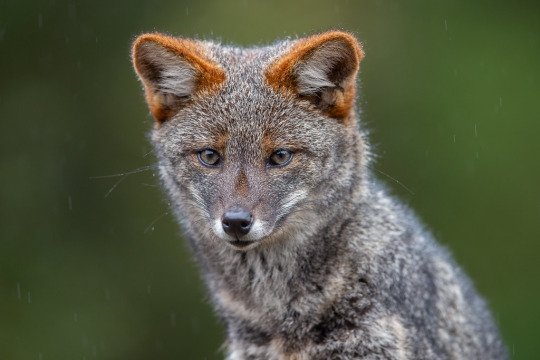
Darwin’s foxes are not actually foxes. True foxes belong to the vulpes genus, and these foxes belong to the lycalopex genus. They share this genus with the Sechuran fox, the hoary fox, the pampas fox, the culpeo, and the chilla. It was believed for a long time that the Darwin’s fox was a subspecies of the chilla, but they are now classified as a different species.
While most South American fox species prefer open grassland or scrub areas, Darwin’s foxes prefer dense forests. They are endemic to Chile, meaning they are only found there, with most individuals found on Chiloé island and in the Valdivian Coastal Range.
In these forests, Darwin’s foxes hunt for small animals like rodents and lizards along with fruit, eggs, beetles, and carrion. They are not strictly nocturnal, diurnal, or crepuscular, so they just hunt when they want to.
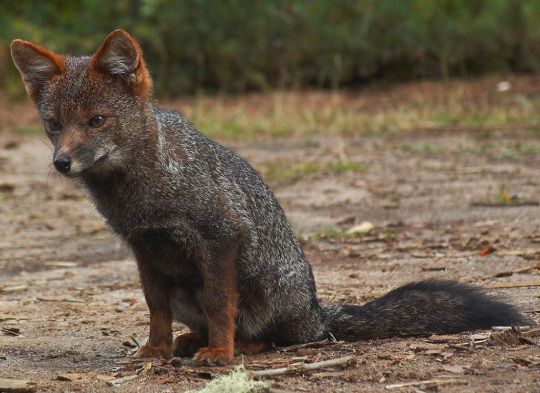
Like almost all other fox species, Darwin’s foxes prefer to live alone, only living in pairs during the breeding season and when they have kits.
Due to habitat loss, feral dogs, and being hunted for their fur, Darwin’s foxes are highly endangered with less than 1,000 individuals left. Conservation efforts have grown their population by small amounts but they are still in danger of extinction.
I rate this very curious fox 18/10. They may be “less wise” than other foxes but their charisma makes up for that
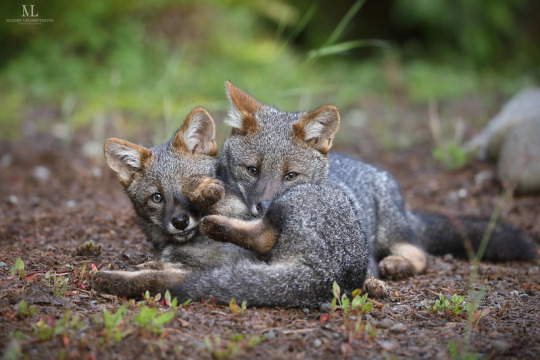
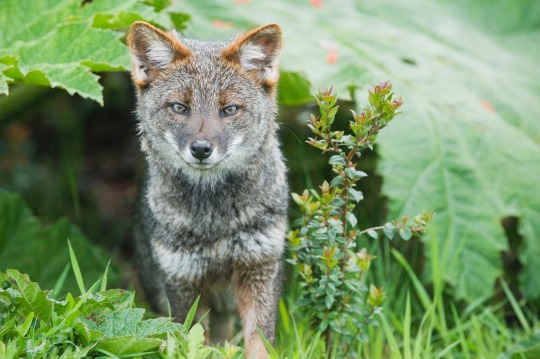
Photo Credits:
(1) Jono Dashper (2) Unknown (3) Maxime Legare-Vezina (4) Kevin Schafer
#Darwin’s fox#fox#animal#animals#nature#wildlife#canine#wild animals#world#canid#dog#foxes#zoology#biology#science#best animal ever#canines#dogs#south america#South American fox#charles darwin#Darwin
976 notes
·
View notes
Text
Lycalopex fulvipes
Charles Darwin found these foxes on the voyage of the Beagle, so they were named after him. Their native name is zorro chilote.
They are described as charismatic and bold around people. After meeting one of them on Chiloé island in 1834, Darwin described them as “more curious or more scientific, but less wise, than the generality of his brethren”. In other words, Darwin’s foxes are very curious and observant, but not as wise as other fox species.
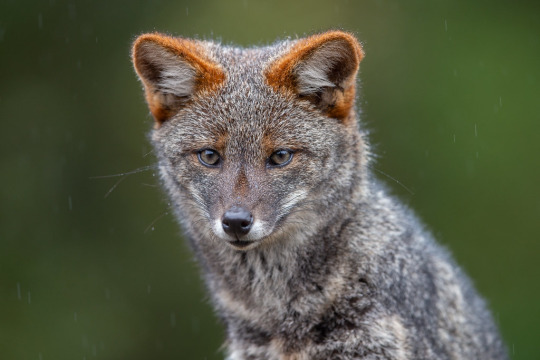
Darwin’s foxes are not actually foxes. True foxes belong to the vulpes genus, and these foxes belong to the lycalopex genus. They share this genus with the Sechuran fox, the hoary fox, the pampas fox, the culpeo, and the chilla. It was believed for a long time that the Darwin’s fox was a subspecies of the chilla, but they are now classified as a different species.
While most South American fox species prefer open grassland or scrub areas, Darwin’s foxes prefer dense forests. They are endemic to Chile, meaning they are only found there, with most individuals found on Chiloé island and in the Valdivian Coastal Range.
In these forests, Darwin’s foxes hunt for small animals like rodents and lizards along with fruit, eggs, beetles, and carrion. They are not strictly nocturnal, diurnal, or crepuscular, so they just hunt when they want to.
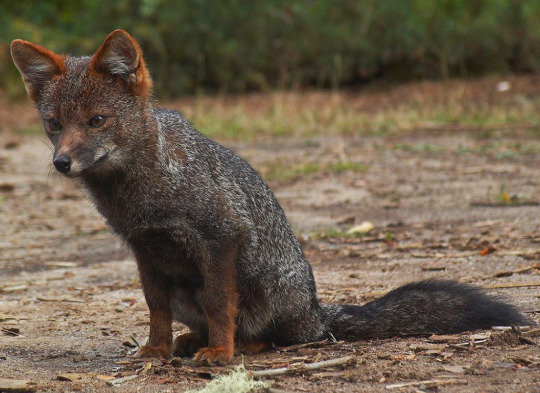
Like almost all other fox species, Darwin’s foxes prefer to live alone, only living in pairs during the breeding season and when they have kits.
Due to habitat loss, feral dogs, and being hunted for their fur, Darwin’s foxes are highly endangered with less than 1,000 individuals left. Conservation efforts have grown their population by small amounts but they are still in danger of extinction.
I rate this very curious fox 18/10. They may be “less wise” than other foxes but their charisma makes up for that
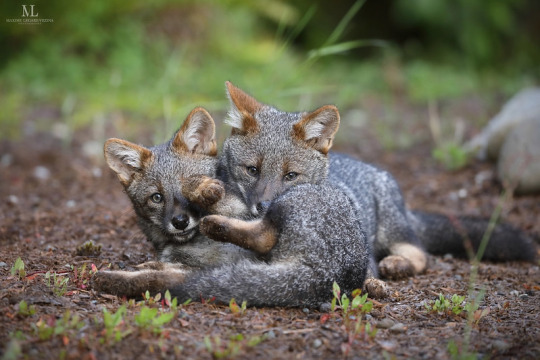
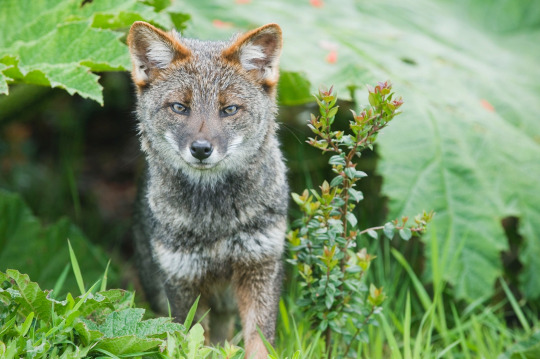
Photo credits:
(1) Jono Dashper (2) Unknown (3) Maxime Legare-Vezina (4) Kevin Schafer
#Darwin’s fox#animals#biology#nature#science#wildlife#zoology#animal#dog#dogs#wild#zorro#fox#foxes#darwin#charles darwin#chilote#zorro chilote
368 notes
·
View notes
Photo

Lycalopex fulvipes - Darwin’s Fox
#Darwin's fox#zorro#lycalopex#fulvipes#canidae#carnivora#mammalia#chordata#animalia#endangered#south america#patagonia#forest#terrestrial#faunal frontier#the faunal frontier
53 notes
·
View notes
Text
Species: South American Canids (Speothos, Chrysocyon, Lycalopex, Cerdocyon, Atelocynus)
This series focuses on helping people choose interesting species for their fursona through informing them of the many, often overlooked, species out there! This post is about South American canids, including false foxes.
──── ◉ ────
Bush Dog (Speothos venaticus)

The bush dog has 3 subspecies:
South American Bush Dog (Speothos venaticus venaticus)
Panamian Bush Dog (Speothos venaticus panamensis)
Southern Bush Dog (Speothos venaticus wingei)
It is oddly hard to find pics of the different subspecies, sorry
Size: 20-30cm (8-12in) height (at shoulder), 57-75cm (22-30in) lenght, 12-15cm (5-6in) tail lenght, 5-8kg (11-18lbs) weight
Diet: carnivorous, preys on large rodents
Habitat: lowland forests, wet savannahs, open pastures
Range:
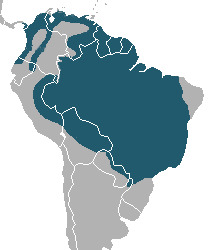
Status: near threatened
──── ◉ ────
Maned Wolf (Chrysocyon brachyurus)

Size: 90cm (35in) height (at shoulder), 100cm (39in) lenght, 45cm (18in) tail lenght, 23kg (51lbs) weight
Diet: omnivorous, preys on small/medium mammals, birds, fish; eats fruit, tubers, sugarcane, other plants
Habitat: savannahs
Range:
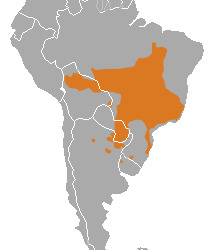
Status: near threatened
──── ◉ ────
Hoary Fox (Lycalopex vetulus)

Size: 58-72cm (23-28in) lenght, 25-36cm (9-14in) tail lenght, 3-4kg (6-8lbs) weight
Diet: omnivorous, preys on invertebrates, rodents, birds; eats fruit
Habitat: woodlands, bushlands, savannahs
Range:

Status: near threatened
──── ◉ ────
Sechuran Fox (Lycalopex sechurae)

Size: 50-78cm (20-31in) lenght, 27-34cm (11-13in) tail lenght, 2.6-4.2kg (5.7-9.3lbs) weight
Diet: omnivorous, varied. Preys on invertebrates, rodents; eats carrion, fruit, seed pods
Habitat: deserts, dry forests, beaches
Range:
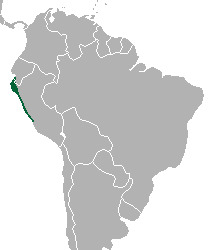
Status: near threatened
──── ◉ ────
Darwin's Fox (Lycalopex fulvipes)
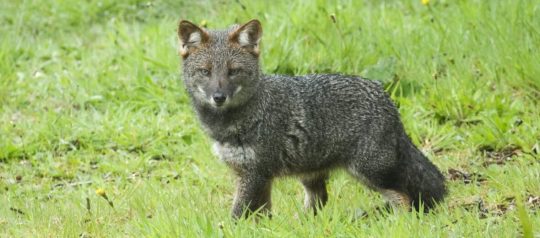
Size: 48-59cm (19-23in) lenght, 17-25cm (7-10in) tail lenght, 1.8-3.9kg (4-8.7lbs) weight
Diet: omnivorous, preys on invertebrates, small mammals, reptiles; eats fruit
Habitat: southern temperate rainforests
Range:
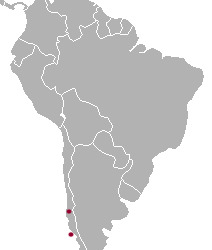
Status: endangered
──── ◉ ────
Pampas Fox (Lycalopex gymnocercus)

Size: 51-80cm (20-31in) lenght, 2.4-8kg (5.3-17.6lbs) weight
Diet: omnivorous, preys on birds, small mammals, invertebrates; eats carrion, fruit
Habitat: montane forests, dry scrublands, wetlands
Range:

Status: least concern
Please note! The pampas fox has 3 subspecies!
──── ◉ ────
South American Grey Fox (Lycalopex griseus)

Size: 65-110cm (26-43in) lenght including 20-43cm (8-17in) tail lenght, 2.5-5.4kg (5.5-12lbs) weight
Diet: omnivorous, preys on small mammals, birds, reptiles, invertebrates; eats carrion, fruit
Habitat: varied; scrublands, steppes, forests
Range:

Status: least concern
──── ◉ ────
Culpeo (Lycalopex culpaeus)

Size: 95-132cm (37-52in) lenght including 32-44cm (13-17in) tail lenght, 5-13.5kg (11-30lbs) weight
Diet: carnivorous, preys on lagomorphs, small mammals
Habitat: varied; temperate rainforests, forests, scrublands, deserts
Range:

Status: least concern
Please note! The culpeo has 5 subspecies!
──── ◉ ────
Crab-Eating Fox (Cerdocyon thous)
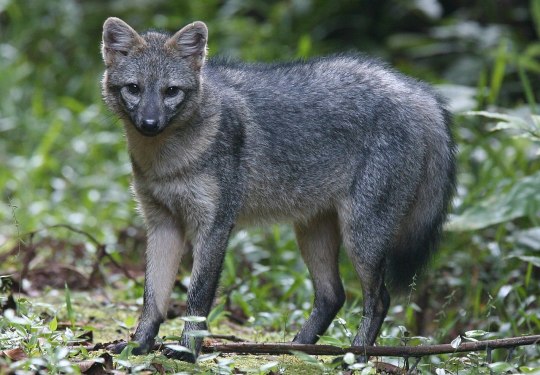
Size: 64cm (25in) lenght, 28cm (11in) tail lenght, 4.5-7.7kg (10-17lbs) weight
Diet: omnivorous, preys on crabs, small mammals, birds, crustaceans, invertebrates, reptiles; eats carrion, fruit
Habitat: savannahs, woodlands, subtropical forests, shrublands
Range:

Status: least concern
Please note! The crab-eating fox has 5 subspecies!
──── ◉ ────
Short-Eared Dog (Atelocynus microtis)
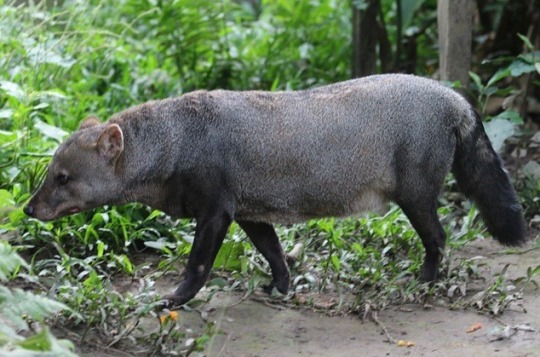
Size: 72-100cm (28-39in) lenght, 9-10kg (19-22lbs) weight
Diet: mostly carnivorous, preys on fish, invertebrates, small mammals, birds; eats fruit
Habitat: rainforests, lowland forests, swamp forests, cloud forests
Range:
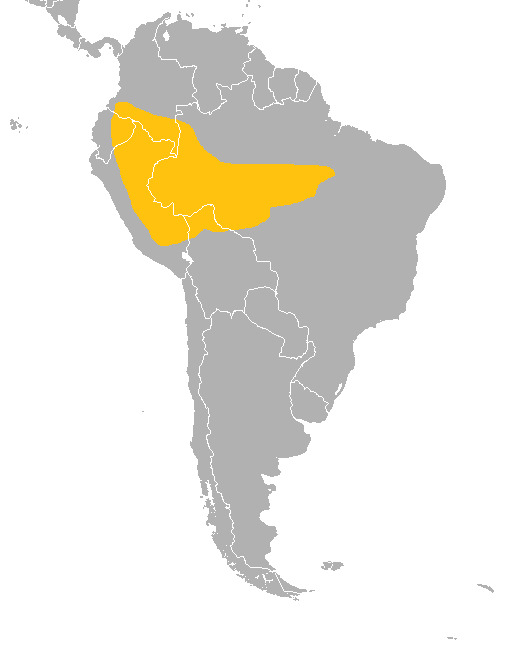
Status: near threatened
Please note! The short-eared dog has 2 subspecies!
──── ◉ ────
#fursona resources#furry#fursona#species#canidae#canine#speothos#chrysocyon#lycalopex#cerdocyon#atelocynus#bush dog#maned wolf#fox#foxes#false foxes#hoary fox#sechuran fox#darwin's fox#pampas fox#south american grey fox#culpeo#crab-eating fox#short-eared dog
7 notes
·
View notes
Text
Every Species of Puppy
Yes, this is is going to be a long post, and I have tagged it as such. If you don’t want to scroll a lot, you can filter the “long post” tag. I think putting a “read more” on pictures is a little silly. You don’t have to concentrate on paragraphs; it’s just puppies. If tumblr allowed “read more” to open on the dashboard rather than a new tab, I might do it, but until then, please make use of filters. For everyone else, puppies!
Well, there is only one subfamily still alive in the dog family (Canidae): Caninae, and so all extant dogs are canines. Tribes, it is.
Urocyon isn’t in a tribe, just its own lone genus (one species isn’t on here, which is the Cozumel fox, as it may have gone extinct twenty years ago, but we won’t know until an official survey is carried out, and in any case I can’t find any photos of the adults let alone the puppies):
Gray fox (Urocyon cinereoargenteus):



Island fox (Urocyon littoralis):



Fox-like puppy tribe (Vulpini), which, no, Urocyon is not part of. Isn’t convergent evolution great?:
Raccoon dog (Nyctereutes procyonoides):



Bat-eared fox (Otocyon megalotis):



Bengal fox (Vulpes bengalensis):



Blanford’s fox (Vulpes cana), couldn’t find any pictures, so I took a screenshot from a video:

Cape fox (Vulpes chama):

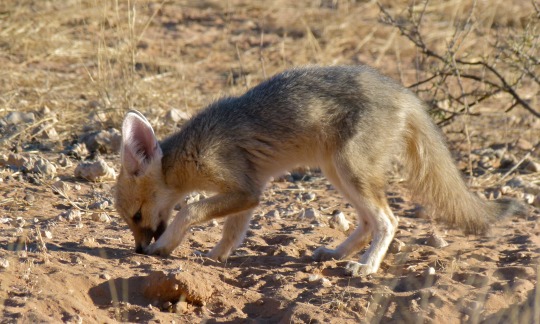

Corsac fox (Vulpes corsac):



Tibetan sand fox (Vulpes ferrilata):



Arctic fox (Vulpes lagopus):



Kit fox (Vulpes macrotis):



Swift fox (Vulpes velox):



Pale fox (Vulpes pallida), can’t find much in the way of puppy photos, but here are a couple with their moms:


Rüppell's fox (Vulpes rueppellii), hard to find pictures of babies, there are some photos of captive bred pups with floppy ears and whatnot, but I’m not endorsing that:

Fennec fox (Vulpes zerda):



Red fox (Vulpes vulpes):


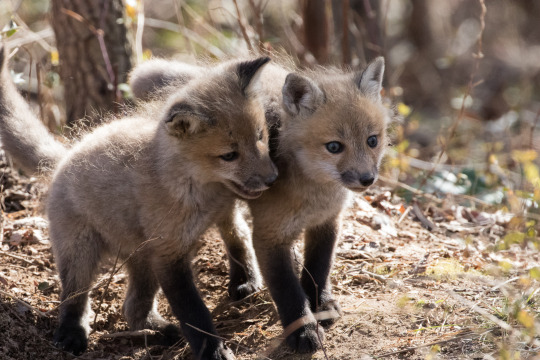
The dog-like puppy tribe (Canini):
Short-eared dog (Atelocynus microtis), elusive as fuck, and this may or may not even be one of their pups:

Crab-eating fox (Cerdocyon thous), yep, lots of fox-like animals even here. What can I say? Nature liked the fox shape for Canidae:



Hoary fox (Lycalopex vetulus):



Sechuran fox (Lycalopex sechurae):

Darwin’s fox (Lycalopex fulvipes):

Pampas fox (Lycalopex gymnocercus), I had to screenshot a video for this one, too:

Chilla (Lycalopex griseus):



Culpeo (Lycalopex culpaeus):


Bush dog (Speothos venaticus):



Maned wolf (Chrysocyon brachyurus):



African wild dog (Lycaon pictus):



Dhole (Cuon alpinus):



Side-striped jackal pup (Canis adustus):



Black-backed jackal (Canis mesomelas):



Golden jackal (Canis aureus):



Ethiopian wolf (Canis simensis):



African golden wolf (Canis lupaster):

Coyote (Canis latrans):



Red wolf (Canis rufus):



Indian wolf (Canis pallipes):

Gray wolf (Canis lupus), the ancestor of our much beloved domestic dog!:



I tend to avoid subspecies unless they’ve been proposed as separate species (like the red wolf and Indian wolf above) since that would make these posts stupidly long even for me, but I feel human’s best friend deserves special mention (Canis lupus familiaris), and its wild descendants the dingo (Canis lupus dingo) and New Guinea singing dog (Canis lupus halloumi), too:



As always, with the exception of our best friend, these adorable puppies are best left to the wild, especially keeping in mind that some of these animals are critically endangered, and the exotic pet is in part to blame.
#long post#puppies#baby animals#cute animals#wild dogs#every dog species#all known dog species#dog family#canidae#rare dogs#canids#dogs#wolves#foxes#canines#cubs#jackals#endangered species#biological diversity
90 notes
·
View notes
Text
Darwin/Wallace Day
So its Darwin Day, named for Charles Darwin, and though I much prefer the lesser known Sir Alfred Russell Wallace I thought I'd make a post anyway.
Over 300 species have been named in honour of the naturalist.

Darwin's Rhea - Rhea pennata
IUCN Status Least Concern

Darwin's Fox - Lycalopex fulvipes
IUCN Status Endangered

Volcan Darwin's Tortoise - Chelonoidis becki
IUCN Status Vulnerable

Southern Darwins Frog - Rhinoderma darwinii
IUCN Status Endangered
Northern Darwin's Frog - Rhinoderma rufum
IUCN Status Critically Endangered likely extinct last seen 1981 suspected victim of chytridiomycosis

Darwin's Bark Spider - Caerostris darwini
IUCN Status Unevaluated
A native of Madagascar which has lost 80% of is forests to deforestation and continues to suffer from illegal logging.

Finally Alfred Russell Wallace
While never completing a formal education due family problems Wallace was an avid naturalist and did amazing research in Oceania he received special permission from an Indonesian Sultan to collect eggs, feathers and butterflies from Papua New Guinea to sell to collectors.
While there he came up with his Theory of Natural Selection the reason Darwin is a household name and not Wallace is because he sent his paper to Darwin already a famed naturalist before 'his discovery'.
Darwin a noted procrastinator suggested a co-written which Wallace agreed to amazed an popular academic took an interest.
Darwin low played the paper and soon after published his Origin of Species which made Wallace quickly forgotten.
Wallace for his part was in Indonesia for all of this and knew nothing of it and when he found out was not known to have held a grudge only happy to have shared a paper with great academic.
I encourage others to read up on Wallace as he was quite interesting.
#Alfred Russell Wallace#Darwin's Day#charles darwin#evolution#origin of species#Natural Selection#rhea#Darwin's rhea#Darwin's Fox#frogs#amphibians#spiders#Galapagos#giant tortoise
2 notes
·
View notes
Link
Back at the end of 1832, while Charles Darwin was doing his thing aboard the HMS Beagle, he came face to face with a small gray fox on the coast of Chile’s Chiloé Island.
“Darwin had heard that there were foxes living on Chiloé – and that they seemed to be different from their relatives on the mainland – but this was the first one he’d seen,” notes bioGraphic magazine. Darwin created a scientific record that could be used both to “confirm its status as a distinct species and to better understand the process of evolution.”
The sweet shy fox was described as a new species in 1837 by Darwin’s colleague William Charles Linnaeus Martin. Officially called Lycalopex fulvipes, it is now commonly known as Darwin’s fox.
Almost two centuries later and still very little is known about these vulpine beauties, much in part because there are so few of them. Endemic to Chile, they roam through several forested regions on the mainland as well as Chiloé. Scientists estimate that in total, their populations numbers around a mere 1,000 individuals; the International Union for Conservation of Nature (IUCN) classifies the species as Endangered...
#endangered#fox#canid#mammal#south america#animals#charles darwin#evolution#nature#science#history of science
119 notes
·
View notes
Photo

SOUTH AMERICAN GRAY FOX AT DUSK
A South American gray fox (Lycalopex griseus) yawns as dusk falls on Chile's Torres del Paine National Park. In Voyage of the Beagle, Darwin chronicled his first encounter with another member of the same genus, Darwin's fox (Lycalopex fulvipes): "I was able, by quietly walking up behind, to knock him on the head with my geological hammer. This fox, more curious or more scientific, but less wise, than the generality of his brethren, is now mounted in the museum of the Zoological Society."
9 notes
·
View notes
Text

[photo by chilote.birds]
7 notes
·
View notes